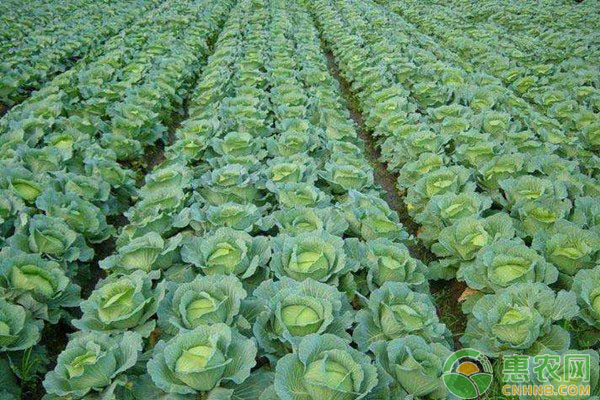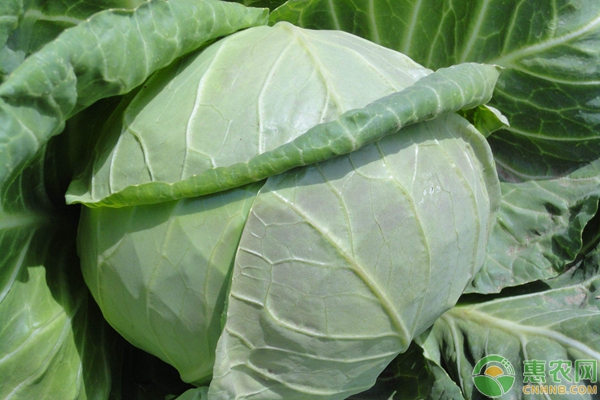How to prevent and cure cabbage wilt? What are the special effects control agents? Cabbage wilt can also be called cabbage blight, which is a disease caused by harmful bacteria called Fusarium. The harmful bacteria of this disease have strong viability and resistance to stress and can survive in the soil for several years. The disease is mainly caused by invading the root wound in the soil.

At present, the selection of high-resistance varieties is a more effective method for controlling cabbage wilt. In the prevention and treatment, "prevention of disease-resistant varieties can be used, seed disinfection, cultivation of disease-free seedlings, clean field, avoiding disease occurrence, planting, rims. The comprehensive measures of combination of cultivation and drug control can prevent and cure the incidence and harm of diseases and ensure the income of cabbage planting. The following introduces the relevant knowledge and methods of the control of Brassica oleracea L.
1. Symptoms and harms of cabbage wilt
The onset of cabbage wilt is generally manifested during the cabbage period, and the incidence is higher in summer cabbage, which is common from seedling seedling to field growth. The diseased cabbage, the whole leaf of the plant or the whole plant loses green and yellow, then the leaves will gradually dry and dry, and the fiber tube inside the bulb will turn from yellow to dark brown. The serious disease will cause large pieces of cabbage to die and appear in the field. In the absence of seedlings and ridges, the average diseased plots are reduced by more than 30%, and serious plots may even occur in severe production, which will have a heavy impact on the yield and quality of cabbage. It can be said that cabbage wilt is one of the most feared cases of cabbage growers.
Second, comprehensive control measures for cabbage wilt
1. Preferred high resistant varieties
The selection of high resistance to cabbage wilt is the most effective measure to control diseases. In the selection of varieties, Baihui, Lutalang, Zhenqi, Xiaqiang, Zhonggan 18, Zhonggan 96 and other resistant varieties can be selected.

2. Cultivate disease-free seedlings
When cultivating seedlings, it is necessary to use the disease-free soil crop cultivation soil, and use 50% carbendazim (used according to 0.3% of the seed amount) and 2.5% of Shira (used according to 3% of the seed amount) for the seed. The clothes are treated, and the plots that have not been blighted in the past few years or have not been planted with cruciferous crops are used as seedbeds. At the same time, the soil is disinfected by spraying the seedbed with carbendazim, methyl thiophanate and wilting, and the disease is sterilized. Strong insect-free seedlings can reduce the incidence of cabbage wilt.
3. Rim planting
Rim planting is also an effective measure to control pests and diseases in the field. In the control of cabbage wilt, you can choose to carry out rim planting with crops other than cruciferae, such as Cucurbitaceae and Solanaceae, and the rotation period should be more than 3 years. Effectively reduce the accumulation of wilted diseased bacteria in the soil and reduce the incidence.
4. Avoiding the peak period of disease
In the time when cabbage blight is prone to epidemics, the incidence of cabbage is relatively high. When planting, appropriate early or delayed sowing or transplanting can be carried out according to local climatic conditions, staggering the peak incidence of disease, and it can also play well. Anti-disease effect. The high-risk period of cabbage wilt is generally from June to September, and should be avoided when transplanting. In addition, for the sowing of cabbage, spring cabbage can be broadcast early, and autumn cabbage is best for late sowing.

5. Strengthen field management
In the field management, on the one hand, before planting, the dead leaves and diseased plants of the former crops should be cleared out of the park for centralized incineration to reduce the number of spores of parasitic wintering pathogens in the field, and on the other hand, timely seedlings should be carried out. On the other hand, cabbage wilt is prone to morbidity in environments below 17 degrees and above 35 degrees. Therefore, in the years or weather when high temperature and drought are encountered, watering should be carried out in time to cool the field.
In general, when blight disease occurs in cabbage planting areas, conventional agricultural and chemical control measures such as seed disinfection, spraying drugs, removing diseased plants, and rim planting are generally difficult to control and clean. . Generally, in the prevention and control, it is possible to use the comprehensive measures of “prevention of disease-resistant varieties, seed disinfection, cultivation of disease-free seedlings, clean field, avoiding disease occurrence, planting of rims, and combination of drug controlâ€. However, not all areas are suitable for the same prevention and control technology, so it is for your reference only!
Urine analyzer is an automated instrument for determining certain chemical components in urine. It is an important tool for automated urine inspection in medical laboratories. This instrument has the advantages of simple and fast operation. However, improper use of urine analyzers and many intermediate links and influencing factors directly affect the accuracy of automated analysis results, which will not only cause errors in experimental results, but even delay diagnosis. Therefore, operators are required to understand the principles, performance and precautions of automated instruments. And the knowledge of influencing factors and other aspects are fully understood, and the correct use of automated instruments can make the results obtained by the urine analyzer more reliable and accurate.
application
In the 1950s, a single dry chemical test strip method was used to measure protein and glucose in urine, and the changes in the color of the test strip were observed with the naked eye and compared with the standard plate to obtain the corresponding values. In the 1980s, due to the high development and widespread use of computer technology, automated urine analyzers also developed rapidly, gradually developing from semi-automatic to fully-automated. Urine analyzers are often divided into two categories according to the test items: â‘ 8-11 screening combined urine test strips mainly used for newly diagnosed patients and health examinations. The eight test items included protein, glucose, PH, ketone bodies, bilirubin, urobilinogen, red blood cells (occult blood) and nitrite; in addition to the above eight tests, urine leukocyte test was added to the nine test items. On the basis of 9 of the 10 urine analyzer testing items, the urine specific density test was added. 11 testing items have added vitamin C testing. â‘¡It is mainly used for the observation of the curative effect of the diagnosed diseases, such as the combination test strip of PH, protein and occult blood (red blood cells) for kidney disease; the combination test strip of PH, sugar and ketone body for diabetes; the combination of bilirubin and urobilinogen for liver disease test tape.
principle
This type of instrument is generally controlled by a microcomputer, and the color change on the test strip is measured semi-quantitatively by using a spherical integrator to receive dual-wavelength reflected light. There are several reagent pads containing various reagents on the reagent strip, each of which reacts independently with the corresponding components in the urine, and displays different colors. The depth of the color is proportional to a certain component in the urine, and there is another in the reagent strip" Compensation pad", as the urine background color, compensates for the errors caused by colored urine and instrument changes.
Put the reagent strip with urine adsorbed in the colorimetric tank of the instrument, and the various reagent pads that have produced chemical reactions on the reagent strip are illuminated by the light source, and the reflected light is received by the spherical analyzer, and the photocell of the spherical analyzer is reflected. Irradiate with dual-wavelength light (measurement light passing through the filter and a reference light), and the selection of each wavelength is determined by the detection item.
The instrument automatically calculates the reflectance according to the following formula, and then compares it with the standard curve, and automatically finds and prints the corresponding results of various components. If the content of a certain component in the urine is high, the reflected light of the corresponding reagent pad is dark, otherwise it is strong.
Reflectance fraction: R(%)=Tm.Cs/TsCm×100%
In the formula, R(%) is the reflectivity; Tm is the reflection intensity of the reagent pad to the measurement wavelength; Ts is the reflection intensity of the reagent pad to the reference wavelength; Cm is the reflection intensity of the calibration pad to the measurement defect length; Cs is the calibration pair. Reflection intensity at the reference wavelength.
Medical Urine Analyzer,Semi Automatic Urine Analyzer,Urine Analyzer and Strips,Accurate Urine Analyzer
Jilin Sinoscience Technology Co. LTD , https://www.contoryinstruments.com